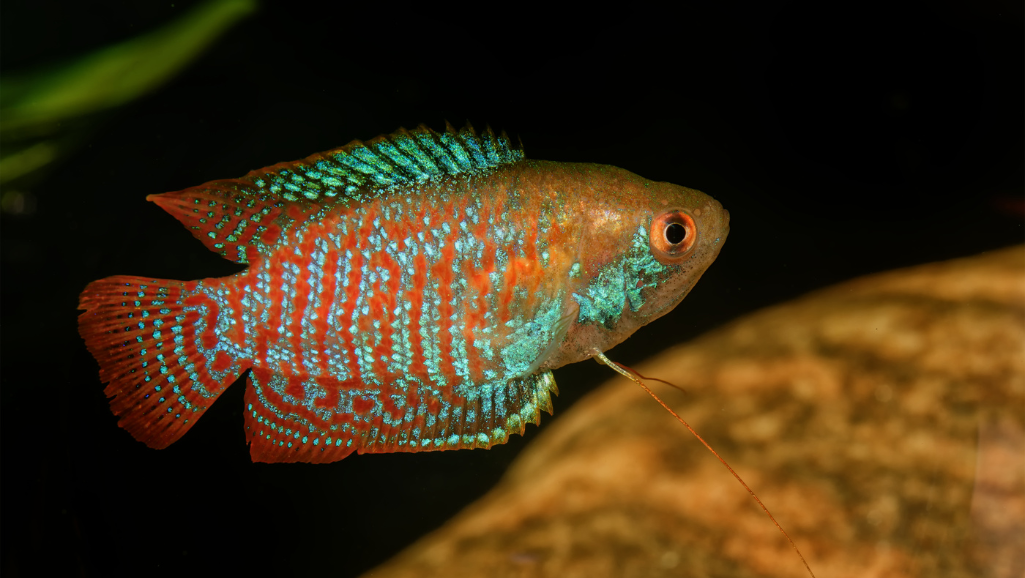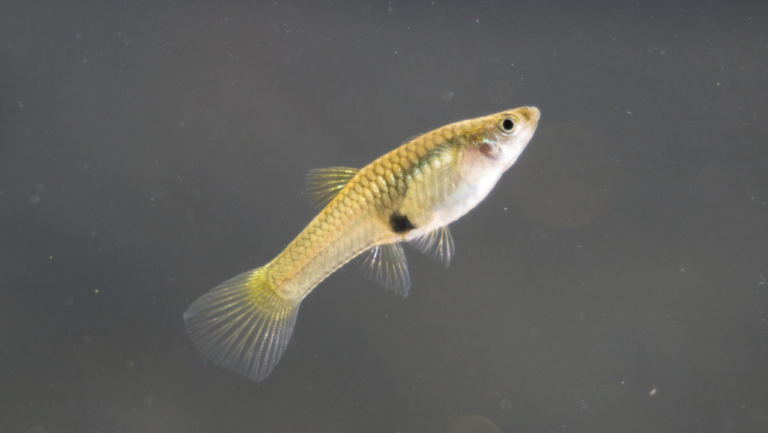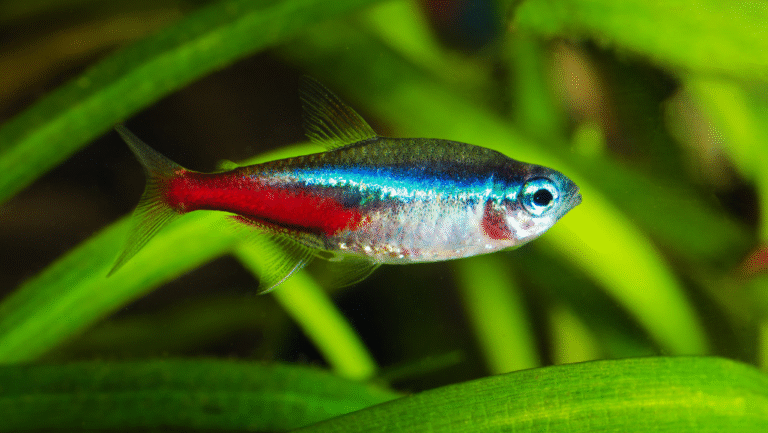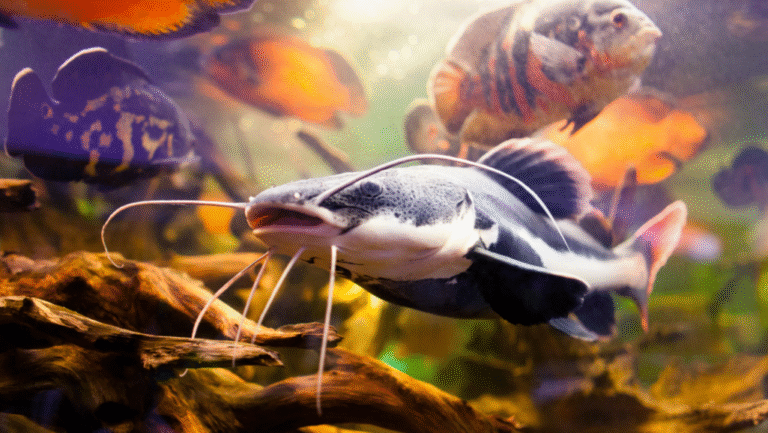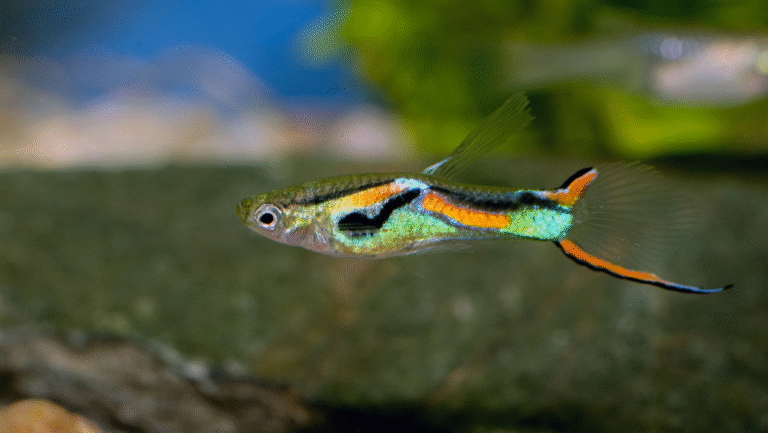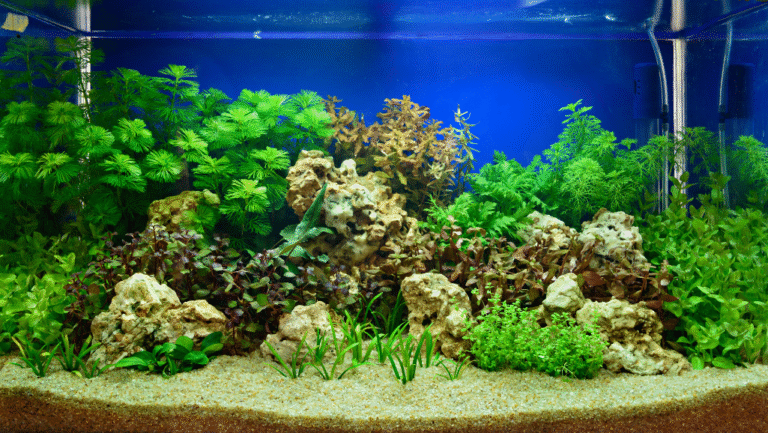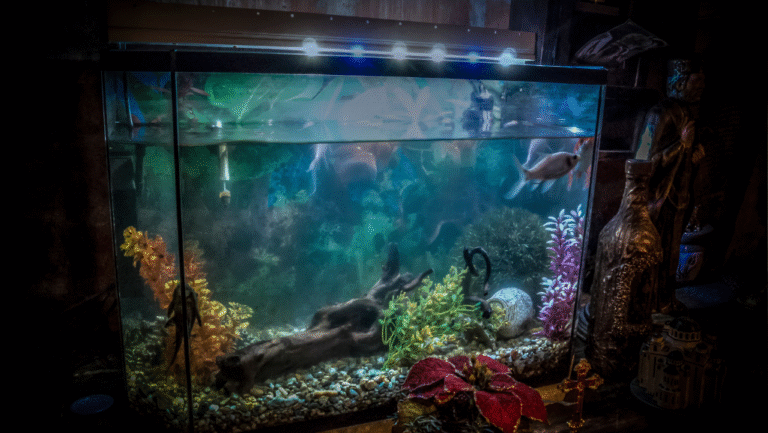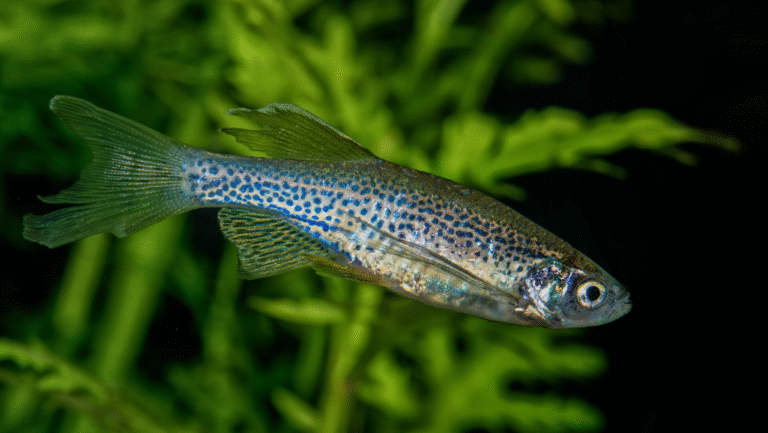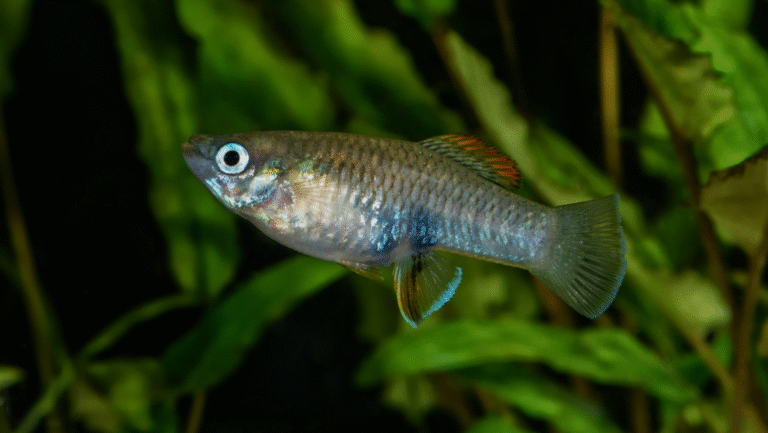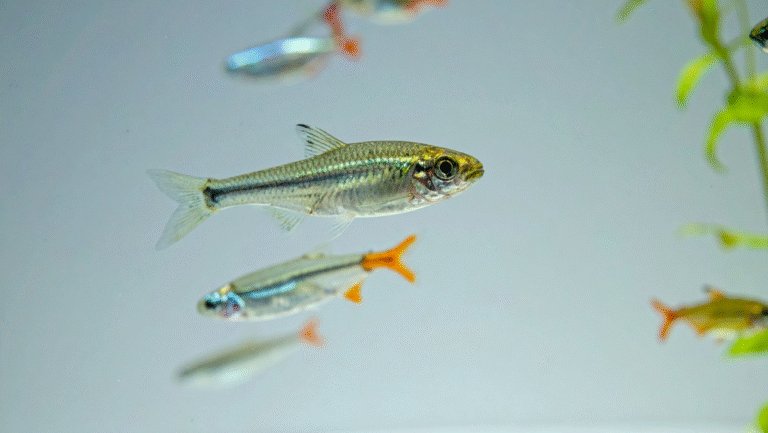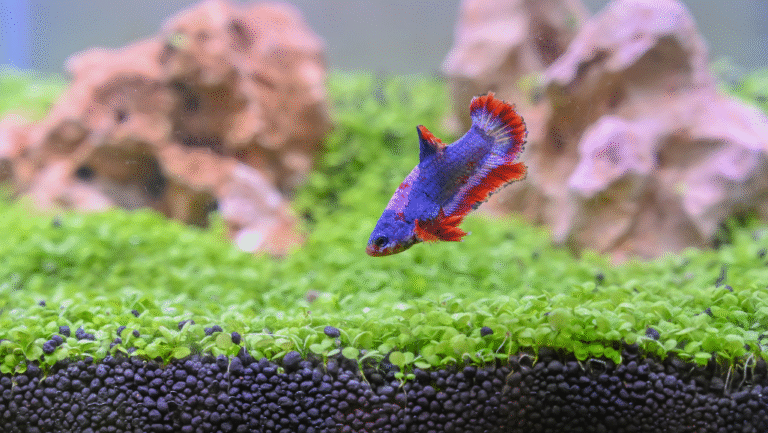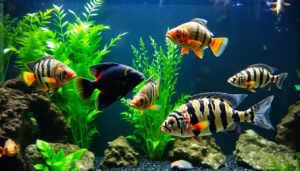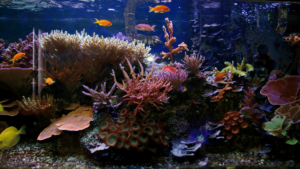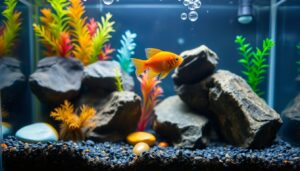The Dwarf Gourami is a colorful gem in freshwater aquariums. It’s known as Trichogaster lalius and is loved for its red and metallic blue colors. Since the 1980s, it has captivated fish lovers with its beauty, even with the challenges of the Dwarf Gourami Iridovirus.
Dwarf Gouramis add elegance and calm to any tank. They have won the hearts of many, showing a deep connection to aquariums. These fish are like living paintings, bringing beauty to both new and experienced aquarists.
Key Takeaways
- Dwarf Gouramis are celebrated for their tranquil nature and striking coloration.
- Proper care can mitigate the risks of the Dwarf Gourami Iridovirus.
- Adequate tank conditions play a crucial role in the longevity of these tropical fish.
- Ensuring compatibility with tank mates is essential to avoid stress and aggression.
- An inspiring addition to freshwater aquariums, Dwarf Gouramis require attentive care and knowledge.
Introducing the Dwarf Gourami: A Splash of Color in Your Aquarium
The Dwarf Gourami is a celebrated tropical tank inhabitant known for its vibrant colors and easy care. These colorful fish bring a stunning range of colors to your aquarium. They appeal to both beginners and experienced aquarists.
The Allure of Tropical Freshwater Fish
Dwarf Gouramis are part of the large freshwater fish community. They attract fans with their striking looks and calm nature. Males grow up to 3 inches and show off bright colors, while females have softer hues.
They live peacefully with other tropical tank inhabitants. This makes them perfect for community aquariums. Their ability to adapt to different water conditions also makes them popular among aquarists.
Understanding Dwarf Gourami Species and Variants
The Dwarf Gourami species has many breeds, like Neon, Red, and Sunset. Each breed looks different and has its own energy and behavior. This variety offers many choices for hobbyists.
- Neon Dwarf Gouramis have an electric blue color that grabs attention.
- The Red Dwarf Gourami has a deep, captivating red that adds contrast.
- Sunset Dwarf Gouramis show a mix of fiery colors, like a dusk sky.
These colorful fish are bred for their beauty. But, it’s important to know their specific care needs to keep them healthy and colorful. Learn more about these unique fish by visiting Flip Aquatics.
To truly enjoy the beauty and personality of these colorful fish, you need to understand their needs and how they contribute to a tropical ecosystem. The Dwarf Gourami offers both beauty and simplicity, captivating people worldwide.
Dwarf Gourami Care Essentials: Ensuring a Healthy Habitat
Starting Dwarf Gourami care is a rewarding journey for aquarium lovers. These pet fish add life and color to a healthy aquarium. Their health depends on the environment we create for them.
The Right Aquarium Setup for Your Dwarf Gourami
Creating the perfect aquarium for Dwarf Gouramis needs careful planning. A large tank is key, with sizes that support their active nature. A setup that looks like their natural home helps reduce stress and increases their life span.
Using modern equipment like the Fluval FX6 filtration system is a good idea. LED lighting that matches the natural day-night cycle also helps. This makes the tank a great place for these aquarium fish.
Water Parameters and Plant Recommendations
Keeping the water stable is crucial. Dwarf Gouramis do best in water with a pH of 6 to 8 and a temperature of 72–82°F (22–28°C). Checking the water regularly helps keep it healthy and stress-free for your fish species.
Also, having lots of plants like Cryptocoryne is good. They make the healthy aquarium look better and give your fish places to hide. These steps help make a peaceful and supportive home for your Dwarf Gouramis.
Dwarf Gourami care not only helps the pet fish but also makes your aquarium lively. It shows your dedication and love for these amazing creatures. Always keep learning and improving your care to make sure every aquarium fish thrives.
From Beginner Mistakes to Expert Care: Learning About Dwarf Gourami
Fishkeeping starts with passion but often lacks deep knowledge. This can lead to beginner aquarium mistakes. Understanding the specific needs of species like the dwarf gourami is key to their survival and happiness.
Dwarf Gourami care requires attention to their environment and diet. Many beginners don’t know that dwarf gouramis need a calm setting. They also need water with pH levels between 6-7 and a temperature of about 75°F to thrive. Without this knowledge, aquarists can shorten their fish’s lives.
It’s crucial to start with an adequate aquarium setup which often includes a 20-gallon tank to ensure ample swimming space for dwarf gouramis.
Before diving into fishkeeping, learning from experienced aquarists or reliable online resources is wise. Insights about Dwarf Gourami care are crucial for a healthy and sustainable habitat. This can prevent common issues faced by beginners.
- Ensure a balanced diet including plant matter and proteins.
- Maintain soft to slightly hard water, within 5-15 dGH.
- Conduct regular bi-weekly water changes, replacing about 10%-25% of the total volume.
- Keep the tank peaceful and free from aggressive species to avoid stress.
By emphasizing thorough research and patience, newcomers can avoid beginner aquarium mistakes. This ensures dwarf gouramis not only survive but thrive. Adopt these practices, and your aquarium will become a vibrant aquatic showcase. It will reflect the rewarding journey of responsible fishkeeping.
Dwarf Gourami Iridovirus: Navigating Health Challenges
The Dwarf Gourami Iridovirus (DGIV) is a big problem for fish keepers. It harms aquarium health and makes it hard to keep fish alive. This virus is known as ISKNV and is very deadly because there’s no cure.
This virus makes fish care harder. Sick dwarf gouramis lose their appetite, get lesions, and get very sick fast. They usually die within days. This shows how important it is to prevent sickness in fish tanks.
Symptoms and Treatment of Dwarf Gourami Disease
Spotting Dwarf Gourami disease early is key. Look for signs like bloat, color changes, and body lumps. While treatments are limited, keeping water clean and reducing stress can help.
Preventing Illness in Aquarium Fish
- Quarantine new fish: Keep new fish separate to stop the virus from spreading.
- Regular water tests: Test water often and adjust it to keep it perfect for preventing fish illness.
- UV sterilization: UV lights might help reduce the virus, even if they’re not proven to work.
Looking into fish like Honey Gouramis might be a good idea. They’re less likely to get sick. Also, learning about community tank setups and the right fish can make your tank healthier and more stable.
The Enthralling Behavior and Compatibility of Dwarf Gourami
The Dwarf Gourami is a captivating species that marvelously showcases unique behavioral traits and social dynamics within the aquarium community. Understanding the Dwarf Gourami behavior is essential not only for their well-being but also for maintaining harmony in a mixed-species tank.
Social Interactions and Suitable Tank Mates
Dwarf Gouramis are known for their peaceful nature, but they do exhibit a hierarchy that can sometimes lead to mild aggression, mainly from males. To promote a tranquil environment, it’s crucial to choose compatible tank mates. Species such as Cardinal Tetras and Black Neon Tetras are excellent choices due to their non-aggressive and schooling nature. They enhance the dynamic yet serene aquarium community. These selections abide by the principles of fish compatibility, ensuring all inhabitants thrive.
Breeding Behavior and Tips for Success
Breeding Dwarf Gourami can be a fulfilling experience if done correctly. The process begins with recognizing the male’s behavior during courtship—he will build a bubble nest to attract the female. After spawning, it’s crucial to separate the female from the nest as males become very protective. Providing an environment that mimics their natural habitat with plant coverage and soft substrate can increase the breeding success rate and encourage natural behaviors. This approach not only supports reproductive success but also enhances the overall well-being of the aquarium community.
In summary, fostering an understanding of Dwarf Gourami’s social and reproductive behaviors influences not only their health but the balance of the entire tank. By carefully selecting compatible species and providing a conducive environment for breeding, aquarium enthusiasts can enjoy the vibrant and dynamic world of Dwarf Gouramis.
Aquascaping for Dwarf Gourami: Creating the Ideal Environment
Setting up an aquarium for dwarf gourami is more than just making it look good. It’s about making a mini-world that feels like their natural home. This helps keep them healthy and happy, and makes the tank a better place for all living things.
Choosing Live Plants Over Plastic: Benefits for Your Fish
Using live aquarium plants instead of fake ones makes a big difference for your dwarf gouramis. Live plants help keep the water clean by adding oxygen and removing bad stuff. They also give your fish real places to hide, which helps them feel less stressed.
- Bolbitis heudelotii
- Microsorum pteropus ‘Trident’
- Crinum calamistratum
- Aponogeton ulvaceus
Setting Up a Biotope Tank Inspired by Dwarf Gourami Habitat
A biotope tank that looks like the calm waters of South Asia is a great idea. For those wanting to try this, check out guides on Fantasea Aquariums and Aqua Joy Life. These sites offer tips on creating a space that’s just right for dwarf gouramis.
Keeping your tank looking good means regular upkeep, like trimming plants and controlling algae. Also, make sure you have the right lighting, food, and feeding schedule. This will help your biotope tank thrive.
Conclusion
Starting a Dwarf Gourami care journey is both visually captivating and engaging. These fish, about 5-8 cm in size, add beauty to any freshwater tank. They come from Southeast Asia and bring color and harmony to their tank mates.
Since Dr. Herbert R. Axelrod introduced them in 1968, Dwarf Gouramis have been a symbol of peaceful aquatic life. They thrive in water between 22-28°C and a pH of 6.0-7.5. A 20-gallon tank is ideal, allowing them to swim and interact comfortably.
Keeping Dwarf Gouramis in groups is key, as they naturally live in groups of up to 200. Today, caring for them is more than just basic needs. It’s about creating a thriving environment where they can thrive for up to 5 years. Dwarf Gouramis are a treasure in the world of tropical aquariums, making aquarium keeping a rewarding hobby.
